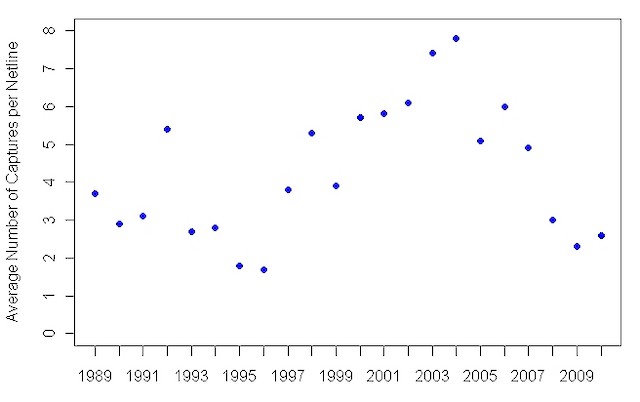Species names in all available languages
| Language | Common name |
|---|---|
| Catalan | bosquerola de Puerto Rico |
| Dutch | Adelaides Zanger |
| English | Adelaide's Warbler |
| English (United States) | Adelaide's Warbler |
| French | Paruline d'Adelaide |
| French (France) | Paruline d'Adélaïde |
| German | Antillenwaldsänger |
| Japanese | キバラアメリカムシクイ |
| Norwegian | antillparula |
| Polish | lasówka żółtobrzucha |
| Russian | Антильская древесница |
| Serbian | Portorikanska šumska cvrkutarka |
| Slovak | horárik antilský |
| Spanish | Reinita Puertorriqueña |
| Spanish (Puerto Rico) | Reinita Mariposera |
| Spanish (Spain) | Reinita puertorriqueña |
| Swedish | puertoricoskogssångare |
| Turkish | Porto Riko Ötleğeni |
| Ukrainian | Пісняр-лісовик антильський |
Adelaide's Warbler Setophaga adelaidae
Version: 1.0 — Published May 28, 2010
Demography and Populations
Introduction
The oldest known Adelaide’s Warbler was at least 10 years and 8 months old (J. Faaborg, pers. comm.). The number of Adelaide’s Warblers captured at Guánica Dry Forest has fluctuated over time (see Figure; J. Faaborg, unpub. data). Mark-recapture techniques estimate annual survival to be 0.685, with survival increasing with total rainfall (J. Faaborg and J. Toms, unpub. data). Using simple estimates of survival, Staicer (1991) found female mortality to be greater than male mortality (0.74 for males, 0.57 for females). Apparent mortality was much higher in one period, when extremely heavy rainfall followed a drought (Staicer 1991).
24% of Adelaide’s Warblers were infected with avian malaria when assessed with molecular techniques (22 of 90 individuals; Fallon et al. 2004), although a study screening for malaria using blood smears found no infected individuals (0 of 3 individuals; Garvin and Marra 1991). It seems likely that avian malaria infections are common, but normally occur only at sub-clinical levels.

Data are from seven 192 m netlines in 1989, eight netlines in 1990, and nine netlines thereafter. (J. Faaborg, unpub. data).

















